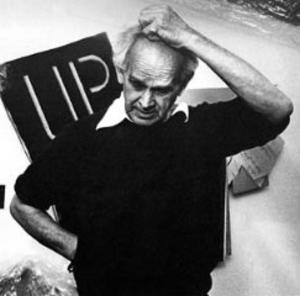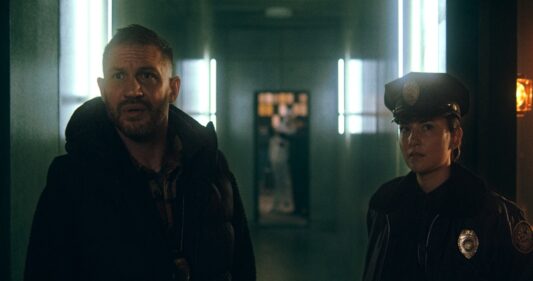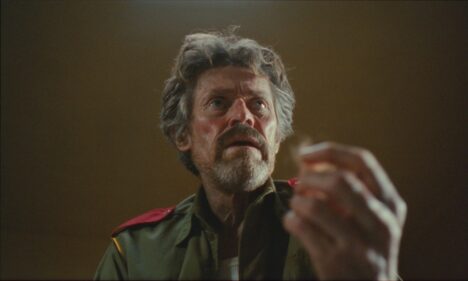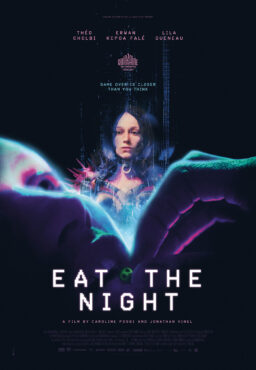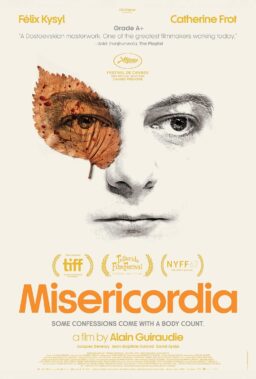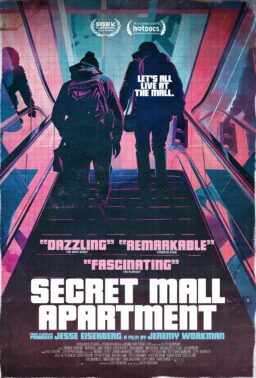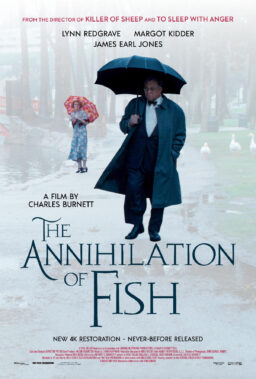Manny Farber has died. The great iconoclast of American film criticism was 91. He coined the term “underground film,” contrasted “termite art” with “white elephant art” in a way that started you thinking about movies in such terms, and once described the auteur theory thusly (I quote from memory): “A bunch of guys standing around trying to catch some director pushing art up into the crevices of dreck.”
Never known to the great masses of filmgoers, he started reviewed movies in The New Republic in the 1940s, The Nation in the 1950s, many other magazines in the 1960s, and finally settled at Artforum magazine in 1967, where he referred to the film I wrote as “Beyond the Volleyballs.” He published one collection of his reviews, first titled Negative Space, later expanded with Manny Farber on the Movies.
He was an advocate of smaller, tougher, moxier movies. “White elephant art,” he said, referred to vast and vacuous studio productions that look big and can’t be ignored, but contain little of real interest. In contrast, Wikipedia quotes him: “Termite-tapeworm- fungus-moss art goes always forward eating its own boundaries, and, like as not, leaves nothing in its path other than the signs of eager, industrious, unkempt activity.”
He appreciated that. He liked movies that forged ahead in their own obsessive way, looking to neither side, intent at arriving at no place more grandiose than their endings. Even before the auteur critics of France, he championed such muscular American directors as Howard Hawks. Once when Russ Meyer and I were in San Diego, working on a screenplay, we had lunch with Manny and the love of his life, Patricia Patterson. He regarded the King of the Nudies with a quizzical, not unfriendly, grin, and said “So you make the whole movie yourself, by hand?”
Although many film critics read and loved Farber, most of us knew only vaguely of the other side of his work. He was a highly-regarded painter, once referred to by the New York Times as the finest still life painter of his time. I went to one of his exhibitions, and thought I saw Termite Art in practice. He often took an overhead view of an assortment of odd little objects, seen against a semi-abstract field. There was wit and playfulness in everything he painted.
I met Manny and Patricia for the first time at the 1972 Venice Film Festival, where, typically for Manny, he had arrived not having bothered to tell anyone he was coming, or obtaining any credentials. There they were, getting off the vaporetto at the Lido pier, and looking around for the festival. How did we know one another? We may have been introduced by Michael Kutza, director of the Chicago festival. I took him to the press office, and announced, “You must give this man a pass because he is the most important film critic in America.” My word carried no weight, other than getting the Farber name passed along to the festival director, who knew of Farber and came bustling out apologizing for “misplacing” his application.
At Venice, we spent a lot of time with John Gillet of London’s National Film Theater, sitting in beach cafes talking about nothing I can now remember, other than Bobby Fischer and the world chess championship then being played. We had a little portable set and once or twice played through the games from the daily paper. I remember one expedition into Venice along with the Yugoslavian director Dusan Makavejev and his wife. We landed at a pizzeria in Piazza San Giacomo, where it became clear that Makavejev fit safely in the termite category.
Manny and Patricia went at Telluride one year, where I had been asked to interview James Stewart onstage about his Anthony Mann Westerns. I told Telluride directors Tom Luddy and Bill Pence that this was a mistake, because Farber had all but put the Stewart/Mann films on the map of critical praise. Manny took my place. I wish I had a transcript. My memory is that his oblique, idiosyncratic questions were unlike anything Stewart had ever been asked before by anyone, and he was greatly amused, even challenged, in replying to them. Farber created a mood in which the two men, within a decade of the same age, were conspirators.
In addition to films, Farber was a critic of art, books, music, anything. Ken Tucker at ew.com says he has this Farber quote taped to his wall: from “I get a great laugh from artists who ridicule the critics as parasites and artists manqués — such a horrible joke. I can’t imagine a more perfect art form, a more perfect career than criticism. I can’t imagine anything more valuable to do.”
Farber (born 1917) died Aug. 17 in San Diego, where for many years he was a professor at the University of California at San Diego. If you have never read Farber, as many have not, Negative Space is in print, and it is never too late to start.

